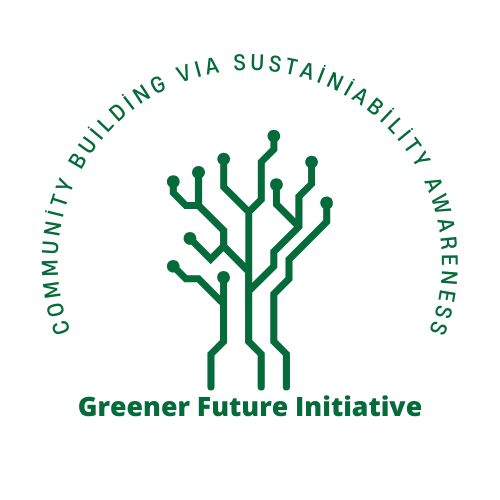Fashion is an ever-changing industry that has shaped cultures and lifestyles for centuries. However, it has also gained a reputation for its environmental impact. The good news? The future of sustainable fashion is bright, thanks to innovative advancements and conscious consumer habits reshaping the industry.
From biodegradable fabrics to the rise of slow fashion, the movement toward sustainability is gaining momentum. In this article, we will explore these innovations and highlight how consumers can take responsibility for a greener future in fashion.
The Problem with Fast Fashion
Fast fashion is the culprit behind much of the fashion industry’s environmental harm. This model prioritizes producing inexpensive, trendy clothing at a rapid pace. Unfortunately, it’s responsible for high levels of waste, pollution, and unethical labor practices.
Here’s why fast fashion is a problem:
- Massive Waste Production: Around 92 million tons of textile waste end up in landfills annually.
- Water Pollution: Dyeing fabrics contributes to 20% of global wastewater.
- Carbon Emissions: The fashion industry accounts for 10% of global carbon emissions.
Sustainable fashion offers a solution, and it begins with innovative materials and practices.
Innovations Driving Sustainable Fashion
The fashion industry is undergoing a green transformation, thanks to new technologies and materials. Here are some of the key innovations shaping the future of sustainable fashion:
1. Biodegradable Fabrics
Biodegradable fabrics are a game-changer for reducing waste. Unlike synthetic materials, these fabrics decompose naturally, leaving no harmful residues.
- Organic Cotton: Grown without synthetic pesticides, it’s a more sustainable alternative to conventional cotton.
- Hemp: A durable, biodegradable material that requires minimal water and no chemical fertilizers.
- Tencel (Lyocell): Made from sustainably sourced wood pulp, Tencel is both eco-friendly and comfortable.
Brands like Stella McCartney and Patagonia are already embracing biodegradable materials in their collections.
2. Fabric Recycling Technologies
Advancements in recycling are giving old clothes a new lease on life. Technologies now exist to break down used textiles into raw materials for creating new garments.
- Mechanical Recycling: This process shreds old fabrics into fibers that can be spun into new yarn.
- Chemical Recycling: Innovative methods dissolve synthetic materials like polyester to create virgin-quality fibers.
Brands like H&M and Adidas are investing in recycling programs to close the loop on textile waste.
3. Vegan Leather Alternatives
Traditional leather production is resource-intensive and harmful to animals. Vegan leather alternatives are more sustainable and cruelty-free.
- Mushroom Leather: Made from mycelium, the root structure of fungi, this leather is biodegradable.
- Pineapple Leather (Piñatex): Created from pineapple leaf fibers, it’s a byproduct of the fruit industry.
- Apple Leather: Derived from apple waste, it’s a renewable and eco-friendly material.
These alternatives offer durability and style without the environmental cost.
4. Circular Fashion Models
Circular fashion promotes reusing and recycling garments to reduce waste. This approach ensures materials stay in use longer and minimizes the need for new production.
- Clothing Rentals: Services like Rent the Runway allow consumers to rent high-quality pieces instead of buying.
- Resale Platforms: Apps like ThredUp and Poshmark make second-hand shopping convenient and trendy.
- Take-Back Programs: Brands like Levi’s encourage customers to return old jeans for recycling or refurbishing.
Circular fashion empowers consumers to reduce waste while enjoying diverse wardrobe options.
5. Digital Fashion
Digital fashion is an innovative concept where garments exist only in virtual spaces. This trend is popular among influencers and gamers who want to showcase unique styles online without producing physical items. By eliminating the need for materials and production, digital fashion significantly reduces environmental impact.
The Rise of Slow Fashion
Slow fashion is the opposite of fast fashion. It prioritizes quality, ethics, and sustainability over trends. Here’s how slow fashion is reshaping the industry:
- Fewer, Better Pieces: Slow fashion encourages investing in timeless, high-quality garments that last longer.
- Local Production: Supporting local artisans reduces the carbon footprint of transportation.
- Ethical Practices: Slow fashion brands focus on fair wages, safe working conditions, and transparency.
By embracing slow fashion, consumers can enjoy durable, meaningful clothing while reducing their environmental impact.
The Role of Consumers in Sustainable Fashion
Consumers hold the power to drive change in the fashion industry. Small, mindful actions can make a big difference. Here are ways to embrace sustainable fashion:
1. Shop Responsibly
- Buy Less: Only purchase items you truly need and love.
- Choose Quality: Invest in well-made garments that last longer.
- Support Sustainable Brands: Research brands’ practices and choose those committed to sustainability.
2. Extend the Life of Your Clothes
- Repair: Mend damaged clothes instead of discarding them.
- Repurpose: Transform old garments into new items, like tote bags or cleaning rags.
- Wash Smart: Use cold water and air-dry clothes to save energy and reduce wear.
3. Opt for Second-Hand and Rentals
Second-hand shopping reduces demand for new production, while rental services offer access to stylish options without ownership.
4. Educate Yourself
Learn about sustainability in fashion and share your knowledge with friends and family. Awareness inspires action.
5. Advocate for Change
Support policies and initiatives that promote sustainable practices. Demand transparency from brands about their environmental impact.
Brands Leading the Way in Sustainable Fashion
Many brands are making genuine efforts to prioritize sustainability. Here are a few examples:
- Eileen Fisher: Known for timeless designs and a commitment to circular fashion.
- Reformation: Combines trendy styles with eco-friendly practices.
- Everlane: Focuses on transparency and ethical production.
- Patagonia: Pioneers in using recycled materials and advocating for environmental causes.
Supporting these brands encourages more companies to adopt sustainable practices.
Challenges in Achieving Sustainable Fashion
Despite progress, the journey toward sustainable fashion has challenges:
- High Costs: Sustainable materials and practices often come with higher production costs.
- Consumer Awareness: Many people are unaware of the environmental impact of their clothing choices.
- Greenwashing: Some brands exaggerate their sustainability claims to attract eco-conscious consumers.
- Limited Recycling Infrastructure: Not all regions have the facilities to recycle textiles effectively.
Addressing these challenges requires collaboration between governments, businesses, and consumers.
The Future of Sustainable Fashion
The future of sustainable fashion looks promising, with exciting trends on the horizon:
- Smart Fabrics: Innovations like self-healing or temperature-regulating materials could extend garment lifespans.
- AI in Design: Artificial intelligence can optimize patterns to reduce fabric waste.
- Policy Support: Governments are introducing regulations to promote sustainable practices and hold brands accountable.
- Consumer-Driven Change: Growing awareness is driving demand for sustainable options, pushing brands to innovate.
Conclusion
The future of sustainable fashion is within reach, but it requires collective effort. Innovations like biodegradable fabrics, slow fashion, and digital garments are revolutionizing the industry. Consumers play a crucial role by making mindful choices and supporting ethical brands.
Sustainable fashion isn’t just a trend—it’s the path to a better future. Let’s embrace it, one garment at a time.

